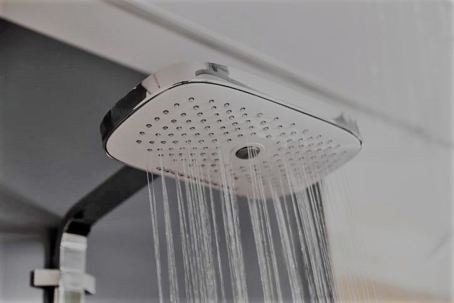Do less-than-positive rumors about low-flow toilets and showerheads make you hesitant to install these water-saving fixtures in your home? You’re not alone. Low-flow toilets and showerheads have been getting a bad rap for quite some time. While it may not have been entirely undeserved in the case of early low-flow toilets, the technology behind these plumbing fixtures has advanced considerably.
Even so, is there still some truth to the myths that have been circulating about low-flow toilets and showerheads? Do low-flow showerheads give you the dreaded “Shower Head” hair from Seinfeld? Find out below!
Myth #1: Low-flow showerheads provide weak water pressure.
This is one of the most common myths surrounding low flow showerheads. While it is true that early low-flow showerhead models didn’t provide the coverage preferred by most people, current models don’t present that issue.
In order to provide that refreshing, powerful water pressure that most people enjoy when they shower, the latest low-flow showerheads inject air into the water that comes out. Other models make use of a “pulse” mechanism that repeatedly interrupts the water flow several times per second--so rapidly that it’s not even possible to detect. In fact, people who have used this type of showerhead have found the pressure to be as strong or stronger than the pressure from a traditional showerhead.
Not to worry: if installed correctly, your water-wise showerhead will NOT give you the “Shower Head” hair from Seinfeld.

Myth #2: Low-flow toilets need to be flushed more and get clogged more easily.
This wasn’t always a myth. When low-flow toilets were first widely introduced in the 1990s, this was definitely an issue. Despite the fact that they only used around 1.6 gallons per flush compared to a standard toilet’s 3.5 gallons, for many people this did not outweigh the early low-flow toilets’ inadequacies when it came to flushing away waste.
However, the technology behind low-flow toilets has improved immensely over the years, and you can purchase water-wise toilets that are now able to handle what you would expect from a standard toilet. For increased water conservation, some toilets come with two flush options, depending on how forceful of a flush you need.
Myth #3: Low-flow showerheads and toilets won’t provide that much of a difference when it comes to conserving water.
Low-flow showerheads and low-flow toilets do use less water than their traditional counterparts during the same duration of usage. The difference may not stand out, however, unless you look at the bigger picture.
When it comes to the average American household’s indoor water consumption, the EPA reports that toilets account for nearly 30 percent and showers account for nearly 17 percent. Considering often we use water for our toilets and showers, water-wise plumbing fixtures would make a difference in the average household over time (assuming there were no plumbing leaks contributing to the household’s wasted water).
How much water are low-flow showerheads and toilets designed to save?
To help answer this question, let’s look at some water usage facts about toilets:
Toilets manufactured prior to the 1980s use about 5-7 gallons per flush.
Toilets manufactured during the 1980s use 3.5 gallons per flush.
Recently manufactured standard toilets use up to 1.6 gallons per flush.
A WaterSense (water-conserving) toilet uses 1.28 gallons per flush.
If you upgrade to a WaterSense toilet from an old, inefficient model that uses over 3 gallons per flush, you’ll probably notice a difference in your water bill a lot faster than upgrading from a model that uses 1.6 gallons per flush.
Here are some water usage facts about showerheads:
Standard showerheads use approximately 2.5 gallons of water per minute.
WaterSense (water-conserving) showerheads use up to 2 gallons per minute.
This may not seem like it would make much of a difference, but let’s do some quick math.
If a household has 2 people who each take a 10-minute shower 6 days a week with a standard showerhead, that household uses 300 gallons of water per week to shower. That comes to 15,600 gallons for showering per year.
Take this same scenario, and only change the standard showerhead to a WaterSense showerhead. The total comes to 240 gallons of water per week and 12,480 gallons per year.
Even though the WaterSense showerhead uses only 0.5 fewer gallons per minute than the standard showerhead, by the end of one year it would save 3,120 gallons!
One important to remember: Not all “water-saving” plumbing fixtures are created equal, and improper installation can render them ineffective or cause them to run less efficiently. To find a quality, low-flow showerhead and toilet, and for an installation that will stand the test of time, it’s always recommended to hire a professional.

